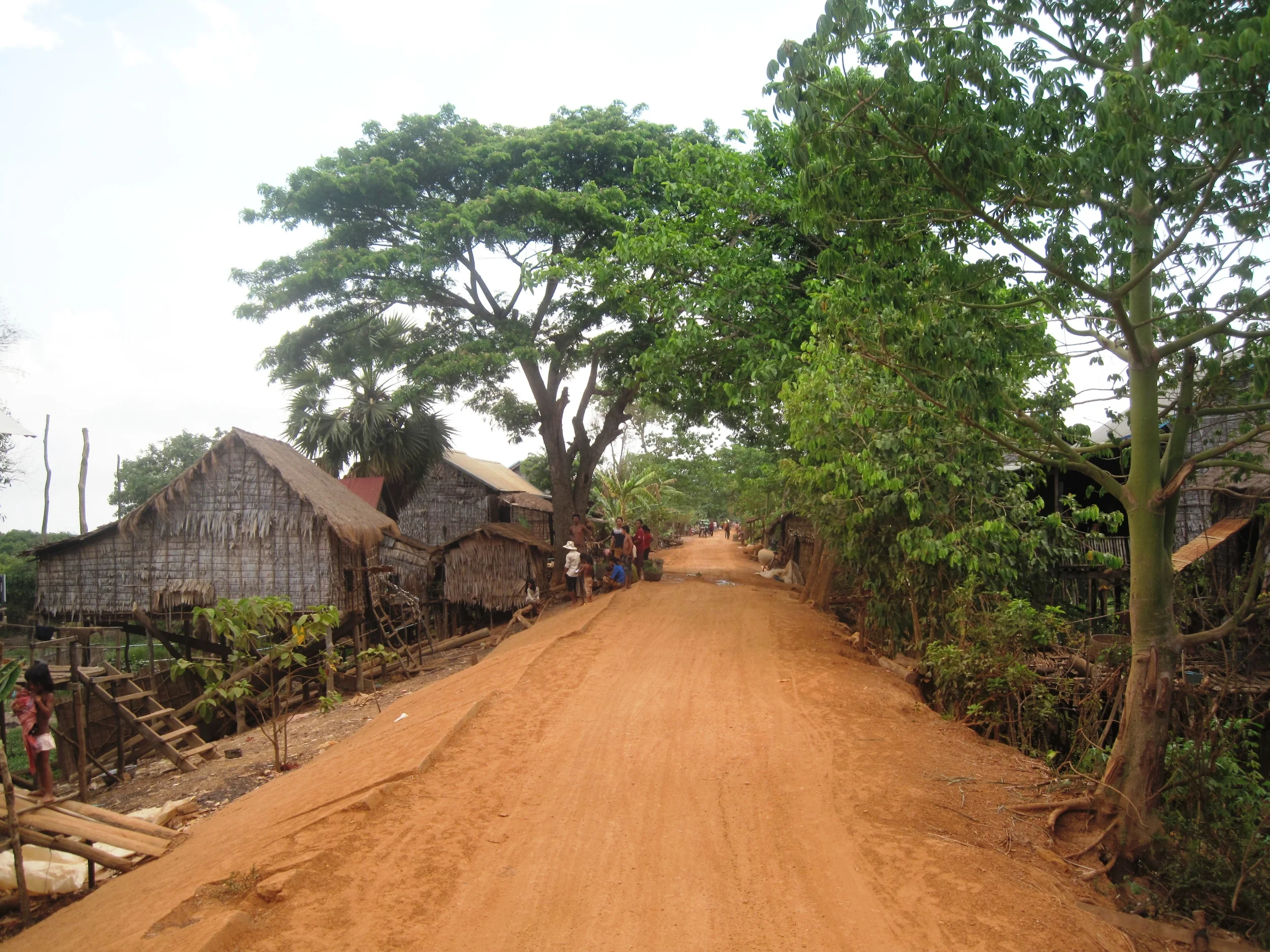"Rice fields, Cambodia" [photo by Anita Rüegg / CC0]
BREATHING
Cambodia & Canada 1975-2005
I can hear them breathing . My brother at the back of the makeshift stage. My son at the lighting console. Chantrea the length of a hand away. I have always been able to hear people breathing, hearts beating. It comes from years of lying quietly as a child, with nothing but the sound of my own breath, my own heart.
The platform smells of sawdust and paint and the cigarettes Daniel smoked as he wielded his saw and brush. The air still bristles with the sound of his hammer, his many expletives. Without him, we would not be here. We would not have a stage, an audience, a second chance.
I deepen my own breathing. Empty my mind. My years with the monks still serve me, still underpin my life.
The chapei wails in the small space. It is a startling sound if you are not used to it, like the cry of a wounded tiger. I flinch as the words fall from Chamroeun’s mouth, harsh and hard. Words that can twist whatever is straight in you, break whatever is whole.
CAMBODIAN GENOCIDE
Read a short history of the Khmer Rouge and the genocide on the Cambodian Tribunal Monitor site
CAMBODIA
Cambodia is located in the southwestern part of the Indochina, sharing borders with Thailand, the Lao People’s Democratic Republic, and the Social Republic of Viet Nam. The dominant features of the Cambodian landscape are the Tonle Sap (Great Lake) and Bassac River Systems and the Mekong River, which crosses the country from north to south. The central plains of the country are surrounded by the Cardamom, Dangrek and Elephant Mountains. Its capital is Phnom Penh.
No one knows how long people have lived in what is now Cambodia. Carbon-dating suggests people lived there as early as 4000 BCE and that rice was grown there before the 1st century CE. Cambodia has its roots in the 1st to 6th centuries in Funan, the oldest Indianized state in Southeast Asia. Funan gave way to the Angkor Empire in 802. For 600 years, Khmer kings dominated Southeast Asia and built the Angkor temple complex, the most extensive concentration of religious temples in the world.
The Khmer kingdom declined in the 13th and 14th centuries. For the next four centuries, Cambodia survived despite frequent incursions by Thai and Vietnamese forces. In 1863, the Cambodian king invited France to impose a protectorate over his kingdom, in order to halt its dismemberment by Thailand and Vietnam. The French ruled Cambodia for 90 years.
Fighting erupted throughout Indochina in the 1950's as nationalist groups struggled to win independence from France. King Sihanouk managed to gain Cambodia's independence peacefully in 1953. In 1955 he abdicated the throne in favor of his father to pursue a political career, serving as Prime Minister until 1960, when his father died and he was named head of state.
In 1965, he allowed North Vietnamese Communists to set up bases on Cambodian soil. As the Vietnam War intensified, domestic opposition to Sihanouk increased and the Workers Party of Kampuchea (later the Communist Party of Kampuchea or CPK) took up arms against him. He was forced to renew diplomatic relations with the United States. President Nixon authorized a bombing campaign to destroy Vietnamese Communist sanctuaries in Cambodia.
When Sihanouk was deposed in 1970, the prime minister, General Lon Nol, assumed power. He inaugurated the Khmer Republic later that year. Chinese and North Vietnamese leaders persuaded the deposed king to establish a government in exile, allied with North Vietnam and dominated by the CPK, whom Sihanouk referred to as the Khmer Rouge (the Red Khmers). In 1975, despite massive infusions of American aid, the Khmer Republic collapsed, and Khmer Rouge forces occupied Phnom Penh.
To return to the history of the Cambodian genocide, click here
PHNOM PENH
Phnom Penh is the vibrant bustling capital of Cambodia. Situated at the confluence of three rivers, the mighty Mekong, the Bassac and the great Tonle Sap, it exudes provincial charm and tranquillity with French colonial mansions and tree-lined boulevards amidst monumental Angkorian architecture. There are currently 2,009,264 people living in Phnom Penh.
The city takes its name from the renowned Wat Phnom Daun Penh (Hill Temple), which was built in 1373 to house five statues of Buddha on a man-made hill 27 meters high. These five statues were floating down the Mekong in a Koki tree and an old wealthy widow named Daun Penh (Grandma Penh) saved them and set them up on this very hill for worshiping. Phnom Penh was also previously known as Krong Chaktomuk (Chaturmukha) meaning "City of Four Faces". This name refers to the confluence where the Mekong, Bassac, and Tonle Sap rivers cross to form an "X" where the capital is situated.
more on Phnom Penh here
Kong Nay, a traditional folksinger and master chapei player, performs at the Smithsonian Folklife Festival in Washington, D.C. in 2007.
!["Rice fields, Cambodia" [photo by Anita Rüegg / CC0]](https://images.squarespace-cdn.com/content/v1/568db3d4bfe873b8ff0d9764/1459910202278-UGX6BIHGBATTC50Y1PL1/rice-fields-603416_640.jpg)





